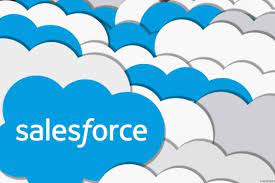Preparing for Instance Refresh in Your Organization
To support your organization’s ongoing growth, Salesforce occasionally performs an instance refresh, which involves upgrading the infrastructure in their data centers. After this maintenance, your instance will transition to a new data center, and its name will change. This process ensures we continue to deliver the high performance you’ve come to expect from Salesforce. Salesforce Instance Refresh Maintenance.
Following these best practices will make this maintenance seamless. Below are answers to some frequently asked questions about instance refresh maintenance.
Note: This document is for informational purposes only and does not constitute a legal or binding agreement. Salesforce may modify its policies and practices at its sole discretion.
Frequently Asked Questions Salesforce Instance Refresh Maintenance
- What is an instance refresh and how will it benefit me? An instance refresh is an upgrade to the infrastructure supporting your instance, leading to its migration to a new data center and a change in its name. This process helps maintain the high performance standards of Salesforce.
- What is an instance refresh consolidation?
- a. It involves refreshing instances to a target instance that is already live and hosting other customer orgs. Unlike a typical instance refresh, where the target is a new, empty instance, consolidations combine instances from older data centers into modern ones.
- b. Salesforce uses these consolidations to merge instances into the most recent data centers. Multiple instances from the old data center are refreshed into the new one during this process.
- What happens during an instance refresh consolidation?
- a. Orgs being refreshed will experience up to 4 hours of downtime.
- b. Orgs already on the target instance will face up to 2 hours of downtime and a site switch.
- What action do I need to take to prepare for an instance refresh? Follow these best practices:
- Enable My Domain
- Update hard-coded references to non-instance specific URLs
- Allow access to all Salesforce IP addresses
- Plan activities around standard maintenance windows
- Update hard-coded references to relative URLs (e.g., login.salesforce.com).
- Ensure corporate network settings or email security filters include Salesforce’s latest IP ranges.
- Implement My Domain before the maintenance window.
- Refresh integrations if issues arise post-maintenance.
- Refresh DNS cache if you see a “Maintenance in Progress” alert.
- Join the Certificate Changes group in the Trailblazer Community if you locally cache certificates.
- What should customers do to prepare for an instance refresh consolidation? Preparation for orgs being refreshed is the same as for a standard instance refresh. Orgs already on the target instance will undergo a site switch. For customers adhering to best practices, site switching is typically seamless, but those with custom DNS settings or Salesforce IP allowlists might need adjustments. Refer to the Site Switching Overview and FAQ for more details.
- Will read-only mode be available during the instance refresh? Yes, read-only mode will be available throughout the maintenance period. See the Read-Only Mode Overview for more information.
- Will Salesforce for Outlook (SFO) OAuth tokens be affected by an instance refresh?
- a. Users will be logged out of SFO and will need to log back in via the Setup Wizard.
- b. If issues persist, follow the steps in the Salesforce for Outlook OAuth reauthentication article.
- c. For further assistance, post in the Salesforce for Outlook & Email Connect Trailblazer Community group.
- If I plan to view my Email Logs after the instance refresh, do I need to request them before the maintenance window? No, Email Logs are centrally stored and will be available after the refresh, so there is no need to request them beforehand.
- Will the instance refresh maintenance impact sandbox refreshes?
- a. Sandbox refreshes will be paused 4 hours before the instance refresh starts.
- b. Sandboxes in progress will be stopped and restarted 24 hours after the maintenance.
- Do I need to restart integrations after the maintenance?
- a. Restarting integrations is not mandatory, but recommended if issues occur post-maintenance. It clears the DNS lookup cache and helps integrations detect the new data center’s IP address.
- b. Check with integration developers for specific restart instructions. Many AppExchange integrations also provide restart guidance.
- Will the certificates used with my current instance at [INSTANCE].salesforce.com and [INSTANCE]-api.salesforce.com be used with the new instance? No, the certificate will change. Each instance has its own certificate, and Salesforce advises against pinning individual server certificates. Pinning root or intermediate certificates is recommended for smoother updates.
- Will the same intermediate, root, and outbound customer-to-Salesforce certificates be used with the new instance? Yes, intermediate and root certificates will remain unchanged, as will outbound certificates for SAML, SSO, and APEX.
- Will the email service addresses for Email-to-Case be impacted by the org migration? No, email service addresses for Email-to-Case will not change and will retain the previous org instance in the address.
- Will email to service addresses (Email-to-Case, Email-to-Apex, Email-to-Salesforce, reply2chatter, etc.) be delayed after an instance refresh? Some emails may experience delays. During the refresh, app servers are unavailable, and emails will be held on Salesforce mail servers. Once the new instance is active, new emails will be delivered immediately, and queued emails will be processed on their next retry.
- Will my new instance be on the same release maintenance window as my former instance following the instance refresh? Yes.
- Will my new instance have the same standard system maintenance window as my former instance following the instance refresh? Yes.
- Will my OrgID change following the instance refresh? No.
- Can I opt out of the instance refresh or instance refresh consolidation? No, all orgs on the source instance identified for a refresh will migrate, and all orgs on the target instances will experience downtime.
- Is there any way to avoid an instance refresh consolidation?
- a. Orgs on Hyperforce are not affected by instance refresh consolidations. Upgrading to Hyperforce can help avoid consolidations.
- b. If eligible, participate in your scheduled Hyperforce migration to avoid instance refresh consolidations.
- After an instance is refreshed, what happens to the data in the old data center? The hardware hosting your instance in the old data center will be decommissioned. Procedures are in place to ensure data does not leave the previous data center and meets compliance and security standards.
- Will our use of third-party content delivery networks (CDNs) be impacted by an instance refresh? Yes. For third-party CDN implementations:
- a. Update the origin and push configuration to staging prior to maintenance. Test direct access and staging post-maintenance before production deployment.
- b. For VisualForce or ContentForce domains, acquire and deploy new SSL certificates that include both the original and new instance hostnames.
- Will third-party integrations be impacted by an instance refresh? Third-party integrations should function as expected post-maintenance. Enabling My Domain can help mitigate redirection issues with hard-coded references.
- What should I do if I have a Live Agent or SOS implementation? If your configuration has hard-coded Live Agent endpoint URLs, it may be impacted. Follow best practices to avoid hard-coded references and update endpoint URLs after the refresh. For more details, refer to the article on Live Agent server changes.
- How is Salesforce communicating instance refresh maintenance to customers?
- a. Salesforce sends email notifications to admins and posts maintenance summaries in the Trailblazer Community and on trust.salesforce.com.
- b. For more details, see the Product & Service Notifications article.
- How does an instance refresh impact previously scheduled activities (weekly exports, Apex jobs, etc.) and Apex callouts? Ongoing activities will be paused and resumed post-maintenance. Some Apex and API jobs might return errors and require rescheduling. Apex callouts to external services may experience issues due to read-only mode during maintenance.
- Are Trust notifications carried over to the new instance?
- a. For instance refreshes, existing subscribers will be auto-subscribed to the new instance. If split into two instances, subscribers must update preferences.
- b. For org migrations, update your subscription settings post-migration to continue receiving relevant updates.
- What should I consider if I use Heroku or MuleSoft?
- Review the Heroku article: What to do about your upcoming Salesforce instance refresh.
- Review the MuleSoft article: Salesforce Connector | Mule application fails after Salesforce org migration.
- What considerations should be made for High Volume Platform Events and Change Data Capture?
- a. Some events may not migrate due to the distributed nature of the Event Bus. The 72-hour retention window for events will not be retained, and ReplayIDs of new events will not relate to previous ones.
- b. Real-time event delivery will not be impacted, but event log data may be incomplete.
- What action do I take if I have Einstein Bots Enabled in my Org? After the instance refresh, disable and re-enable the Einstein bot feature to trigger new authentication with Einstein.AI.
- Will event log data be affected during the instance refresh? The event log data will be affected during the refresh. The refresh period’s logs may not be retrievable.
Conclusion
Staying informed and prepared for instance refreshes ensures a smooth transition and continued high performance of Salesforce. Follow best practices, adjust configurations as needed, and utilize the provided resources for a seamless experience.













